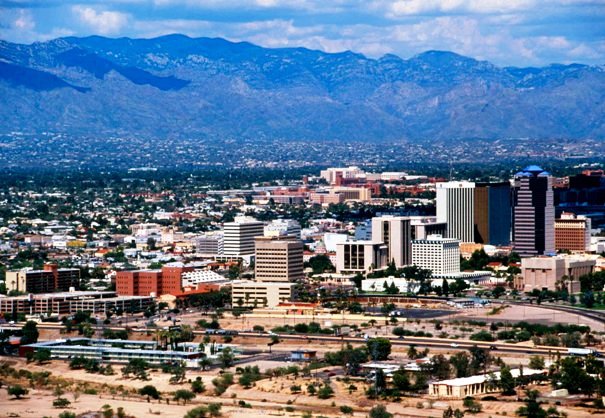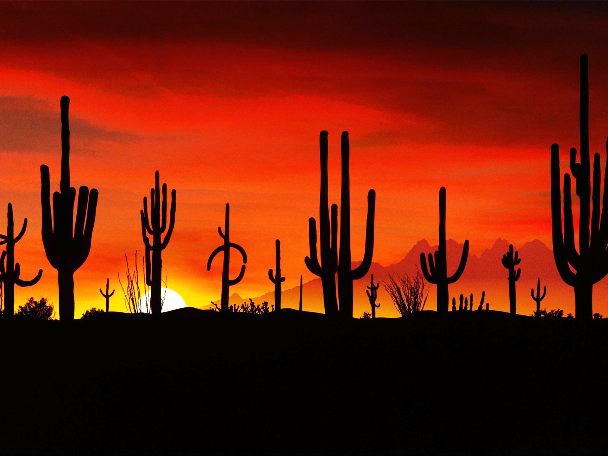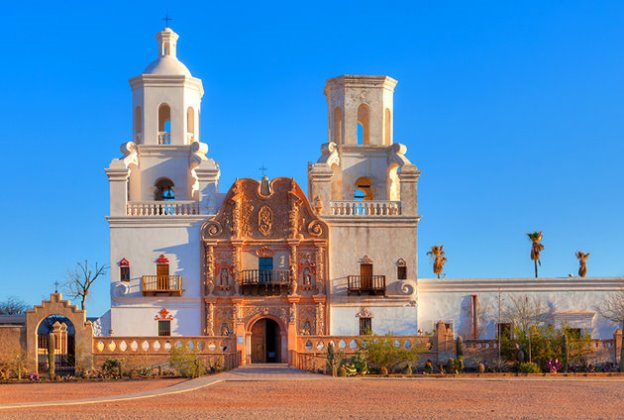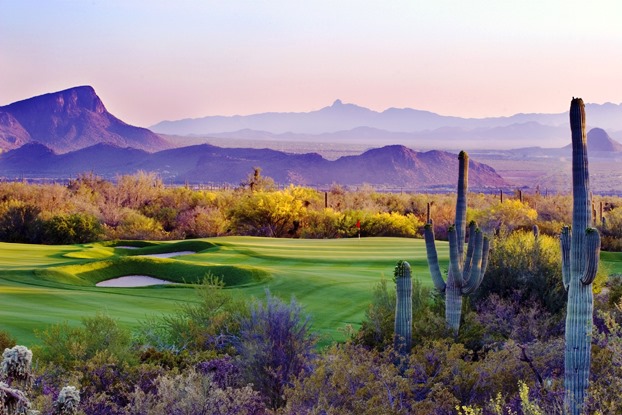The Old Pueblo, as Tucson is affectionately known, is built upon a deep Native American, Spanish, Mexican, and Old West foundation. Arizona‘s second-largest city is both a bustling center of business and a relaxed university and vacation resort town. Metropolitan Tucson has more than 850,000 residents, including thousands of snowbirds who flee colder climes to enjoy the warm sun that shines on the city more than 340 days a year.

The name Tucson came from the Native American word stjukshon (pronounced stook-shahn), meaning “spring at the foot of a black mountain.” (The springs at the foot of Sentinel Peak, made of black volcanic rock, are now dry.) The name became Tucson (originally pronounced tuk-son) by the Spanish explorers who built a wall around the city in 1776 to keep Native Americans from reclaiming it.
At the time, this presidio (fortified city), called San Augustin del Tuguison, was the northernmost Spanish settlement in the area, and current-day Main Avenue is a quiet reminder of the former Camino Real (“royal road”) that stretched from this tiny walled fort all the way to Mexico City.

Tucson’s 20th-century growth occurred after World War I, when veterans with damaged lungs sought the dry air and healing power of the sun, and again during World War II with the opening of Davis-Monthan Air Force Base and the rise of local aeronautical industries. It was also around this time that air-conditioning made the desert climate hospitable year-round.

Today, many transplants come from the Midwest and nearby California because of the lower housing costs, cleaner environment, and spectacular scenery. And despite the ubiquitous strip malls and tract-home developments, this college town has Mexican and Native American-cultural influences, a striking landscape, and all the amenities of a resort town.

High-tech industries have moved into the area, but the economy still relies heavily on tourism and the university, although, come summer, you’d never guess. When the snowbirds and students depart, Tucson can be a sleepy place.
